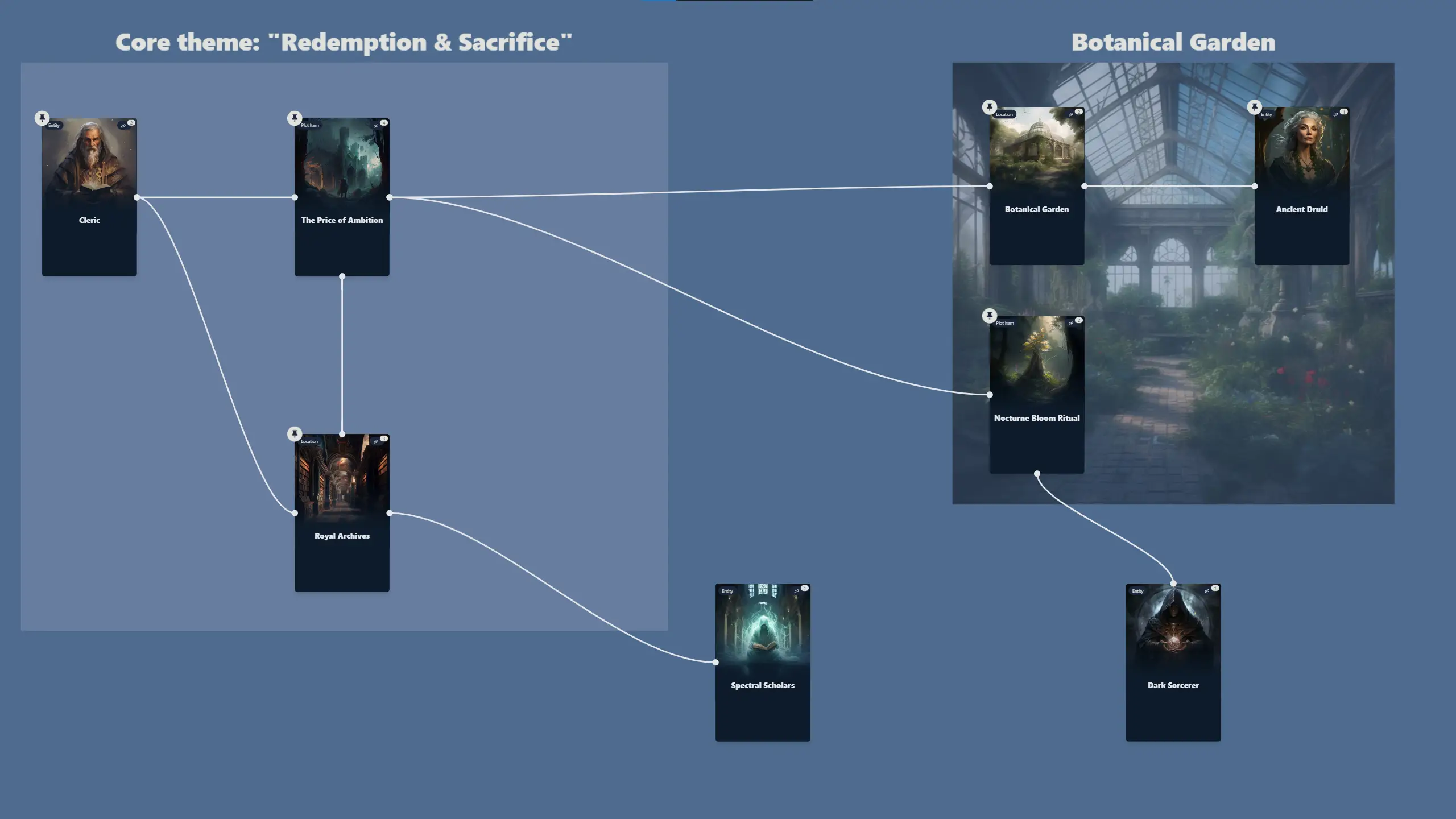
Integrating character backstories into the heart of our scenarios or campaigns is a subtle but particularly powerful tool in the GM's arsenal. It's one that I'm particularly fond of. When used properly, this technique offers two benefits: it deepens the link between the players and the story, and it enriches the universe of your games with personal issues. The point here is to create a narrative that resonates deeply with the players and turns their personal story into a driving force for the overall plot.
Character stories are anything but static; that's the heart of the approach. They are alive, open to growth and evolution as the scenario or campaign progresses. Encouraging players to see their story as full of mysteries and unresolved issues invites them to engage more actively with the narrative. When their pasts are an integral part of the world's history, this engagement is only strengthened. NPCs from a character's past may resurface, bringing with them old scores or debts of gratitude, or past actions may have a tangible impact on the current state of the world.
The fact that characters' past choices are reflected in present-day issues underlines how these decisions have a lasting impact. This approach not only ensures continuity, but also adds depth to the game. By using elements of the past as seeds that develop naturally in the main narrative, the GM ensures that they are not seen as forced additions, but as an integral part of the story. This can be achieved by incorporating small, seemingly insignificant details from a character's past into ongoing quests and plots. This can lead to real moments of emotion that motivate the character's actions, offering interesting possibilities for development.
One effective method of strengthening group cohesion and dynamics is to blend the stories of different characters. Linking characters through common acquaintances or shared events can build a sense of camaraderie and collective purpose. Designing side quests linked to the individual stories, as long as they are balanced with the main story, can also offer a richer and more varied storytelling experience.
I recently had some fun testing this approach with Crucible for my current campaign. For each of the PCs I did the exercise of breaking down their backstory into individual nodes. My guideline was to select any element that was either important in the character's background or had narrative potential - with all the subjectivity that the latter criterion possesses. So for each character I ended up with a series of nodes: places, plot items, characters and events. I created these nodes in a blank Crucible board and gave them a coherent visualisation to represent the different characters. Each of them then became a Template that I could integrate at will into any of my modules so that I had all the relevant brainstorming elements in front of me and could create direct connections with their nodes in my scenario.
This integration of the characters' backstories into the main narrative is a delicate balancing act between the personal and the epic. It encourages an in-depth exploration of their stories, paving the way for the GM to build a richer, more complex narrative. I really think that using a visual writing tool like Crucible can significantly help in this process, providing an inspirational structure and simplifying the integration of stories. GMs can create stories that are not only compelling, but also resonate on a personal level with each player.